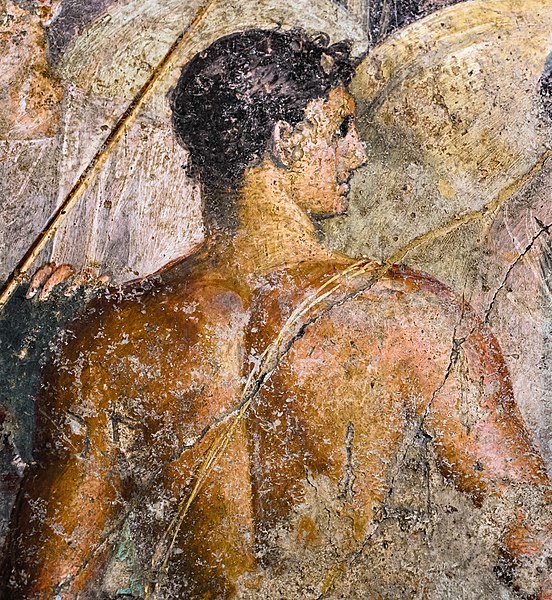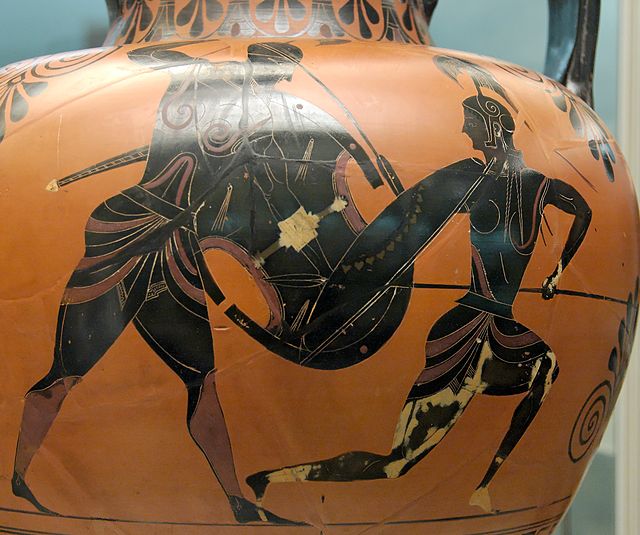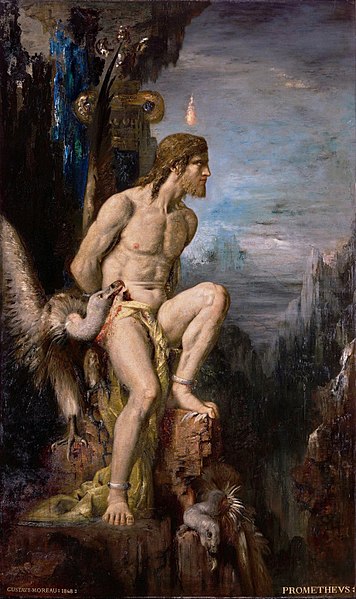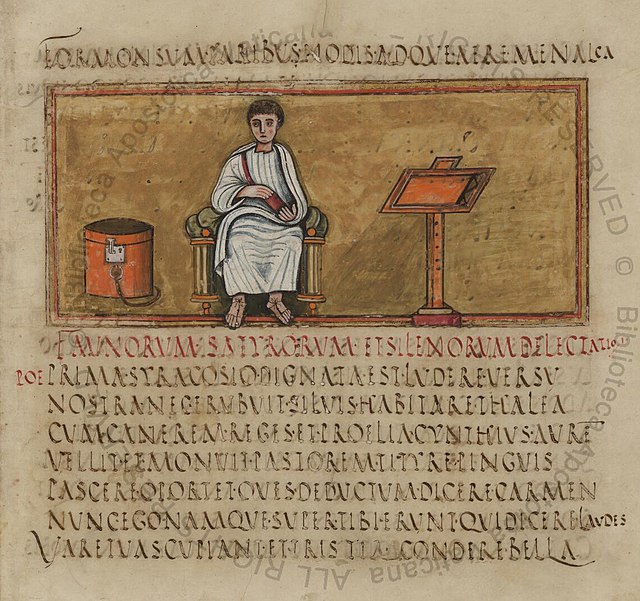In Greek mythology, Patroclus was a Greek hero of the Trojan War and an important character in Homer's Iliad. Born in Opus, Patroclus was the son of the Argonaut Menoetius. When he was a child, he was exiled from his hometown and was adopted by Peleus, king of Phthia. There, he was raised alongside Peleus' son, Achilles, of whom he was a childhood friend and close wartime companion. When the tide of the war turned against the Achaeans, Patroclus, disguised as Achilles and defying his orders to retreat in time, led the Myrmidons in battle against the Trojans and was eventually killed by the Trojan prince, Hector. Enraged by Patroclus' death, Achilles ended his refusal to fight, resulting in significant Greek victories.
Patroclus on an antique fresco from the House of the Tragic Poet in Pompeii, 1st century AD (Naples National Archaeological Museum)
A fresco in Pompeii depicting Achilles seated between Briseis and Patroclus in the marquee
A cup depicting Achilles bandaging Patroclus' arm, by the Sosias Painter.
Menelaus and Meriones lift the body of Patroclus while Odysseus and others look on (Etruscan relief, 2nd century BC)
Greek mythology is the body of myths originally told by the ancient Greeks, and a genre of ancient Greek folklore, today absorbed alongside Roman mythology into the broader designation of classical mythology. These stories concern the ancient Greek religion's view of the origin and nature of the world; the lives and activities of deities, heroes, and mythological creatures; and the origins and significance of the ancient Greeks' cult and ritual practices. Modern scholars study the myths to shed light on the religious and political institutions of ancient Greece, and to better understand the nature of myth-making itself.
Achilles and Penthesileia by Exekias, c. 540 BC, British Museum, London
Prometheus (1868 by Gustave Moreau). The myth of Prometheus first was attested by Hesiod and then constituted the basis for a tragic trilogy of plays, possibly by Aeschylus, consisting of Prometheus Bound, Prometheus Unbound, and Prometheus Pyrphoros.
The Roman poet Virgil, here depicted in the fifth-century manuscript, the Vergilius Romanus, preserved details of Greek mythology in many of his writings.
Phaedra with an attendant, probably her nurse, a fresco from Pompeii, c. 60 – c. 20 BC








